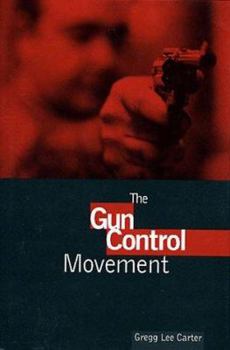Gun Control Movement
Provides a map of the social and political landscape of the gun control movement in the United States. It analyzes the relationship between guns and violence, American attitudes about gun control and how those attitudes affect and reflect the movement, and the future of gun control in the United States. Discusses at length the letter and spirit of the Second Amendment to the Constitution. Focuses on the mid-1970s to the present, but also introduces...
Format:Hardcover
Language:English
ISBN:0805738851
ISBN13:9780805738858
Release Date:July 1997
Publisher:Twayne Publishers
Length:166 Pages
Weight:0.85 lbs.
Dimensions:0.7" x 5.8" x 8.8"
Customer Reviews
2 ratings
The Gun Control Movement Review
Published by Thriftbooks.com User , 24 years ago
In recent years Twayne Publishers has done a fine service for the study of social movements through a series of now twenty-five short studies. These have included such movements as the American Peace Movement, the Antinuclear Movement and the Creationist Movement. While varying in analytical content, they have provided an unusually valuable basis for describing and thinking about the variety of objects contained in the term "Social Movements." Gregg Lee Carter, Professor of Sociology at Bryant College, has added another highly useful volume to that series. Carter's emphasis is largely on two gun control organizations, Handgun Control, Inc. (HLC) and the counterorganization, the National Rifle Association (NRA). Carter also analyses some of the issues and thinking about guns in the U.S., such as their relation to violence, the impediment to gun control in the Second Amendment, and what he describes as the "myth of the frontier legacy." Carter opens with a chapter on the relation of violence to guns and finds the data research ambiguous. In concluding the chapter he poses what he calls the central question for the rest of the book: "why the gun control movement has seen so little success. Why does the United States lack strict national gun control laws?" Much of the remainder of the book attempts to answer this question by closer analysis of the two organizations: the HLC and the NRA. Carter's analysis of the Second Amendment and the alleged role of a frontier legacy convinces him that these often cited explanations have little factual basis; yet the limited victories of the gun control movement and the successful opposition of the NRA remains a problem. The question is deepened by his analysis of polls. Large majorities support control measures although their intensity and commitment may not be deep. The author emphasizes that while the public appears supportive of gun control, they did not approve of banning guns. This reluctance, as he describes it, has been a defining issue in the gun control movement. From its formation in 1974, the HLC has broken with prior organizations that had advocated banning guns. In 1977 a "palace coup" in the NRA transformed that organization from being a spokesman for hunters and rifle users. Prior to that it was unopposed to controls, a sharp contrast to its present fierce antipathy toward all such efforts. Since 1977, it has been highly successful in preventing national legislation for controls. While the HLC, on the other hand, has had some successes, such as the Brady bill, in the main it has not achieved most of its goals. Carter also reviews a number of polls concerned with the sources of gun control support and opposition. While he points to sources of financial support and lobbying activities of the NRA he has no clear analysis of why the organization has been so overwhelmingly opposed to any gun control measures, why its membership is so intense in
This book greatly helps one to understand gun control issues
Published by Thriftbooks.com User , 26 years ago
Choice, February 1998, p. 1070Carter, Gregg Lee. The Gun Control Movement. Twayne/Prentice Hall International, 1997. 166p bibl index afp ISBN 0-8057-3885-1Carter's short book provides a useful introduction to issues related to gun control in the U.S. Among the critical questions he examines are American attitudes toward gun control and the degree to which these attitudes correspond to the agendas of key organizations such as Handgun Control Inc. and the National Rifle Association. In addition, this book explores conflicting interpretations of the Second amendment, the effect of the frontier legacy on American views of guns, and the connections among society, politics, and the gun control movement. In a very well balanced assessment, the author analyzes the strengths and weaknesses of the pro- and anticontrol arguments and the organizational capacities of Handgun Control Inc. and the NRA. The introduction includes some valuable cross-national comparisons related to gun violence and gun control. The book also contains some important demographic profiles of typical pro- and anticontrol individuals, and examines the internal contradictionswithin each camp. In sum, this is a helpful overview situated in the broader context of social movement theory.-Peter Seybold, Indiana University-Bloomington





